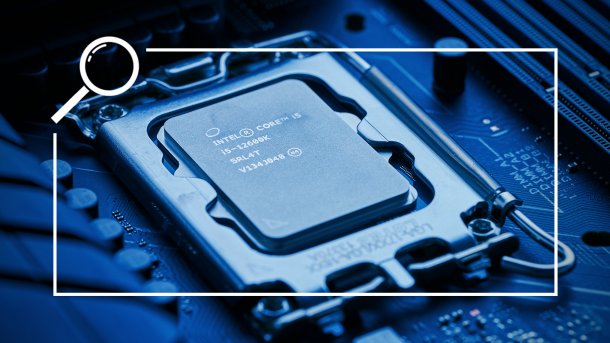Intel takeover by Qualcomm: What speaks for and against it
Qualcomm allegedly wants to buy Intel. This is not particularly realistic – but there are arguments in its favor.

(Image: heise online / mma)
Intel is vulnerable due to its dry spell: The group is no longer worth 100 billion US dollars on the stock market – a deep fall since 2000, when Intel peaked at just over 500 billion dollars; adjusted for inflation, that would be more than 900 billion dollars today.
US media are treating Qualcomm as a potential Intel buyer. Qualcomm could thus acquire a lot of design expertise and new business areas: The company has no offerings in servers and desktop PCs to date. Intel's integrated graphics processors (IGPs) for notebook processors would also be a significant upgrade compared to the Adreno graphics unit in the Snapdragon X CPUs. The current Adreno is significantly weaker than the GPUs in the AMD Ryzen and Intel Core Ultra.
There is hardly any overlap in the Intel product range with Qualcomm's core business, processors and modems for smartphones.
However, Qualcomm is also relatively strong in the automotive chip business. However, this has so far mainly been about infotainment. The Israeli company Mobileye, in which Intel holds a majority stake, would be an addition: it supplies chips for driver assistance systems (ADAS) and automated driving.
Difficult to finance
Even if you believe the speculation, many questions remain unanswered, especially regarding financing. At USD 185 billion, Qualcomm's market capitalization is not even twice that of Intel. A takeover would therefore be a huge chunk. In the last four quarters, Qualcomm has generated a total operating cash flow of 23 billion US dollars – with outliers of between 3 billion and 9.6 billion dollars per quarter.
Regular payments are deducted from this, such as dividends, share buybacks, loan payments and tax provisions. To make matters worse: Intel is currently making a loss per quarter – so the debts continue to add up. If Qualcomm wants to take over Intel, there will be credit debts for many years to come.
Read also
Intel hangs in the deep red
An Intel takeover by Qualcomm would therefore only be realistic if Intel were to be broken up first. One dividing line is obvious: the chip development division and the chip production division, which already operates as a foundry, i.e. as a contract manufacturer. For Qualcomm, the manufacturing division would be new territory and a high risk. This is because Qualcomm is a classic fabless chip company that has its designs produced by TSMC or Samsung, for example.
The chip contract manufacturers TSMC, Samsung or Globalfoundries would be potential candidates for the purchase of Intel Foundry. Samsung and Globalfoundries would thus acquire production know-how; global market leader TSMC would have much more production capacity at a low price in one fell swoop. So far, however, there are no signs of such a takeover.
Patent conflict with AMD
The Register also draws attention to potential patent problems. In 2009, Intel and AMD updated their license agreement, which allows Intel to use the 64-bit extension x86-64, but explicitly excludes the transfer of licenses. If a company takes over Intel, it would have to negotiate a new agreement with AMD. Otherwise, no more Intel processors would be allowed to be sold.
This would be necessary in order to finance all the Intel employees. If Qualcomm lets the engineers design ARM processors, a huge source of revenue would be lost. Even with mass redundancies in the medium term, this would be an economic shot in the foot. It would be more realistic to poach staff instead of taking over an entire company.
Last but not least, global antitrust authorities would have to give their approval. As Intel is one of only two x86 processor manufacturers left, countries are likely to take a close look. In the case of Nvidia and ARM, they have already thwarted a takeover.
Media straw fires to manipulate share prices should also not be neglected. Sources can spread rumors to cause short-term price fluctuations.
Empfohlener redaktioneller Inhalt
Mit Ihrer Zustimmmung wird hier ein externer Preisvergleich (heise Preisvergleich) geladen.
Ich bin damit einverstanden, dass mir externe Inhalte angezeigt werden. Damit können personenbezogene Daten an Drittplattformen (heise Preisvergleich) übermittelt werden. Mehr dazu in unserer Datenschutzerklärung.
(mma)